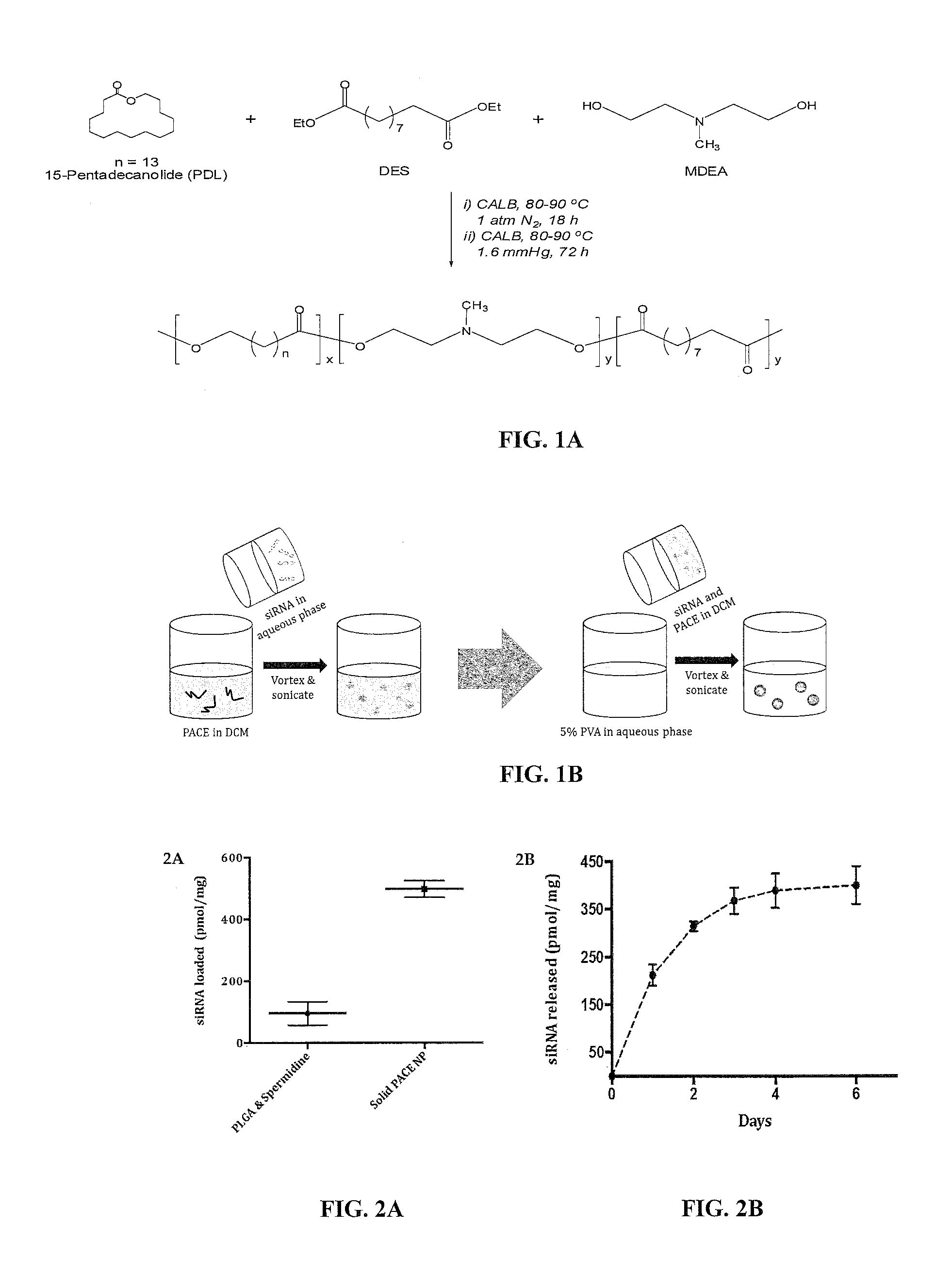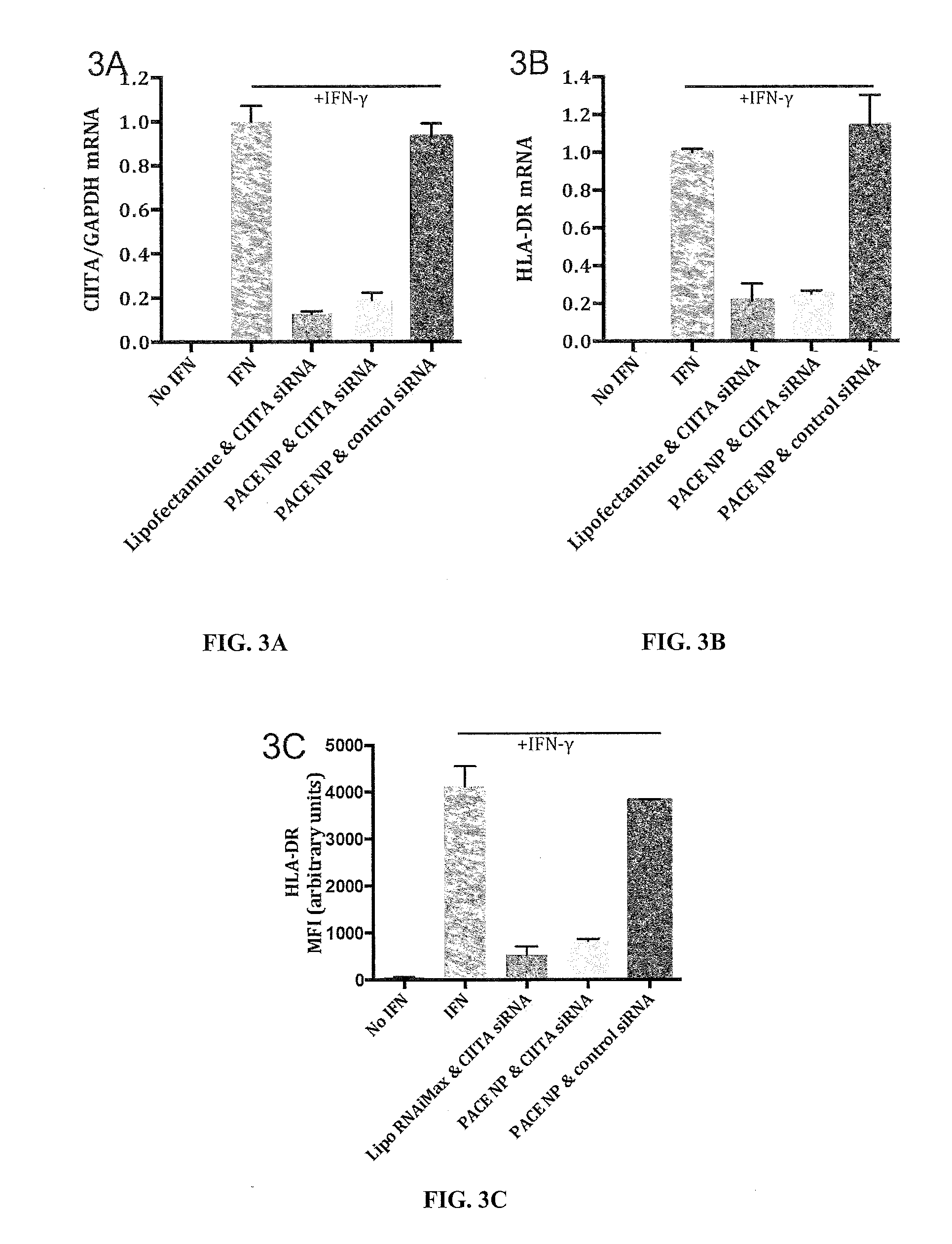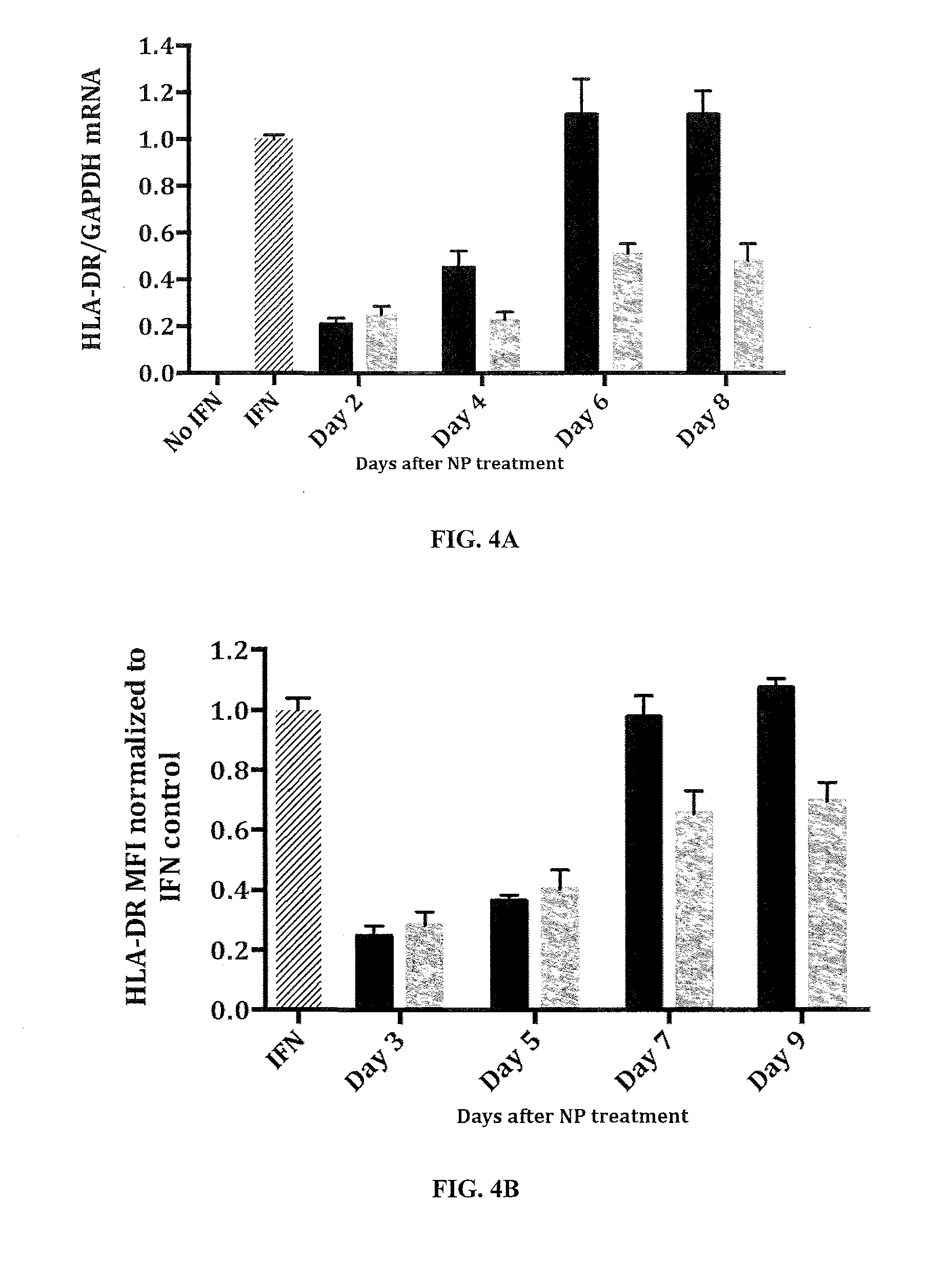Poly(amine-co-ester) nanoparticles and methods of use thereof
a polymer nanoparticle and aminecoester technology, applied in the field of poly(aminecoester) polymeric nanoparticles, can solve the problems of unstable sirna, degraded sirna by serum enzymes, and inability to diffuse easily across the cell plasma membrane, etc., to achieve the effect of increasing the total polymer delivered, improving encapsulation efficiency, and increasing nucleic acid loading
- Summary
- Abstract
- Description
- Claims
- Application Information
AI Technical Summary
Benefits of technology
Problems solved by technology
Method used
Image
Examples
example
Example
PACE NPs Effectively Silence siRNA Expression in HUVECs In Vitro
Materials and Methods
[0304]Poly(amine)-co-ester (PACE) nanoparticles were fabricated using a double-emulsion solvent evaporation technique (FIGS. 1A-1B). The nanoparticles were generated using the PACE polymers shown in Table 1 above. siRNA in sodium acetate buffer was added to PACE dissolved in methylene chloride and sonicated to form the first emulsion. Next, the emulsion was added to a 5% PVA solution and sonicated to form the second emulsion. The particles were hardened in 0.3% PVA solution for 15 mins with a rotavapor and lyophilized for 48 hours with or without the addition of trehalose.
[0305]Post fabrication, nanoparticle morphology and size were characterized using scanning electron microscopy.
[0306]siRNA loading and release were quantified using Quant-iT PicoGreen.
[0307]Knockdown via CIITA siRNA loaded nanoparticles is evaluated in human umbilical vein endothelial cells (HUVECs) in vitro. Endothelial cel...
PUM
| Property | Measurement | Unit |
|---|---|---|
| Fraction | aaaaa | aaaaa |
| Fraction | aaaaa | aaaaa |
| Time | aaaaa | aaaaa |
Abstract
Description
Claims
Application Information
 Login to View More
Login to View More - R&D
- Intellectual Property
- Life Sciences
- Materials
- Tech Scout
- Unparalleled Data Quality
- Higher Quality Content
- 60% Fewer Hallucinations
Browse by: Latest US Patents, China's latest patents, Technical Efficacy Thesaurus, Application Domain, Technology Topic, Popular Technical Reports.
© 2025 PatSnap. All rights reserved.Legal|Privacy policy|Modern Slavery Act Transparency Statement|Sitemap|About US| Contact US: help@patsnap.com



